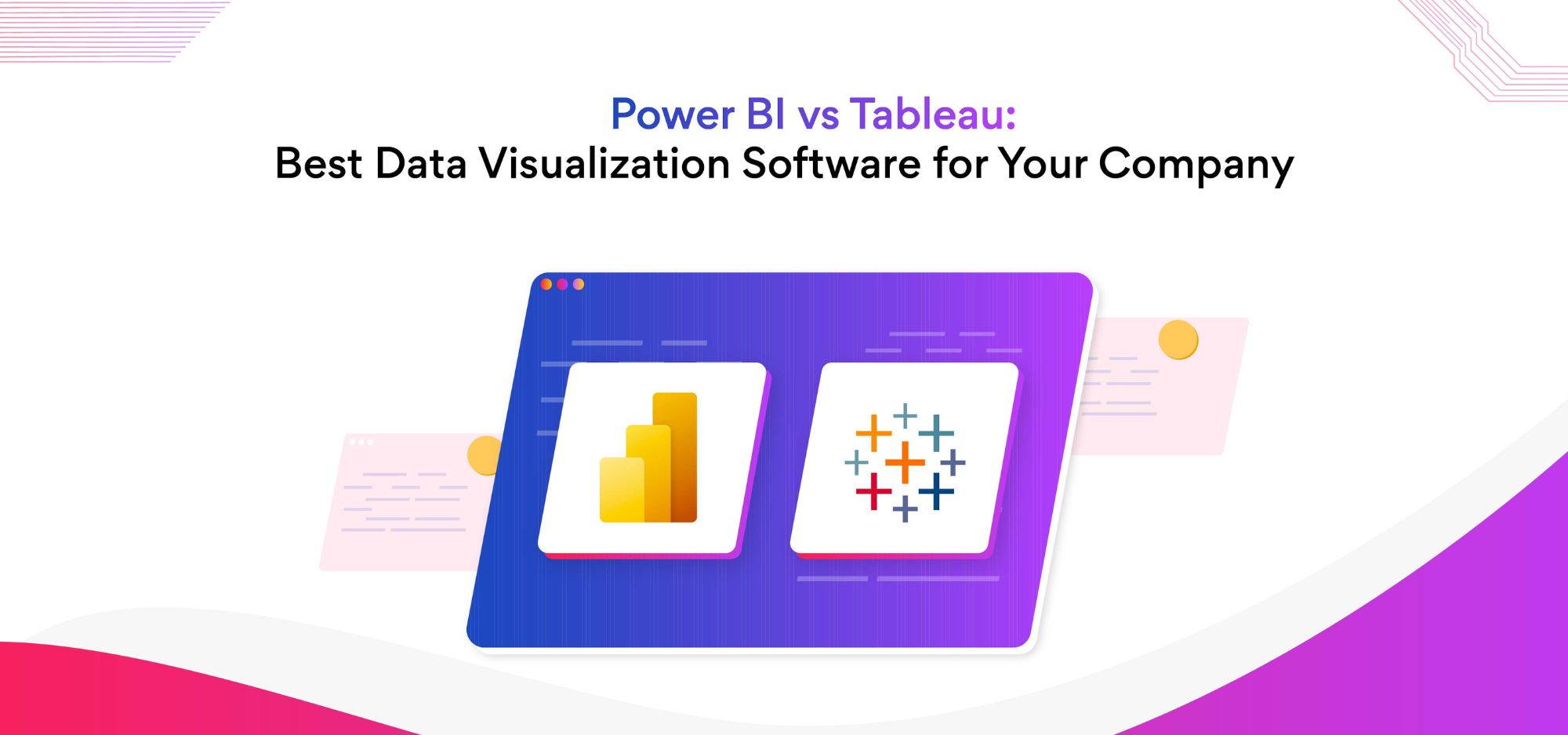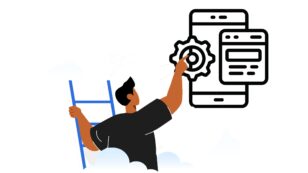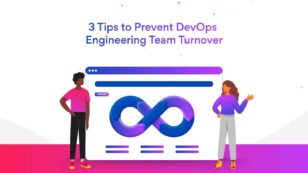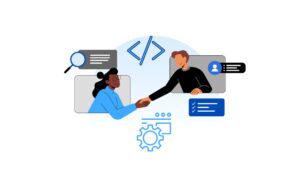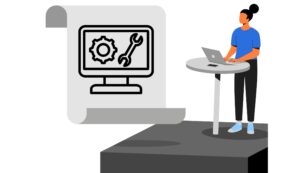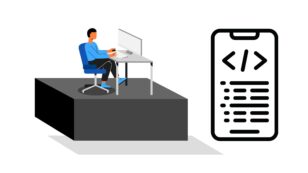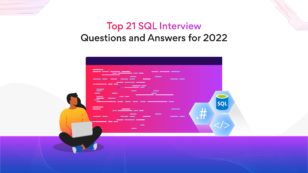Power BI vs Tableau: Best Data Visualization Software for your Company
Is Power BI or Tableau easier? What is the difference between Power BI and Tableau? What are the advantages of Power BI over Tableau? Which is in more demand: Power BI vs Tableau?
To find answers to these questions, keep reading this post.
Innovations in data science play a huge role in modern computing. However, to leverage any data, we need to comprehend it, and that’s where data visualization comes into play.
What is Data Visualization?
Data visualization is the graphical representation of information, often in the form of a chart, picture, table, or diagram. The primary purpose of data visualization is to identify trends, monotonous patterns, and anomalies in the data. The four main stages of data visualization are:
- Exploration
- Analysis
- Synthesis
- Presentation
Data analysts and scientists analyze, understand, and visualize information effectively. Data visualization tools help them convey their observations through pictures, graphs, and charts. Data visualization tools also convert data into a visually appealing format that is easy to understand for any layman.
Companies use data visualization and analysis tools like charts, widgets, pivot tables, and tabular view components to create insightful reports and dashboards. Data visualization helps business owners and stakeholders gain insights from many metrics and vast amounts of data.
Recognizing patterns and errors helps improve productivity, detect red flags, and manage business analytics. This feature helps to make critical business decisions, plan business strategies, and define business goals.
Companies use Tableau, QlikView, Grafana, Plotly, Chartist.js, Power BI, Datawrapper, Sisense, FusionCharts, and D3.js for their data visualization requirements. However, Power BI and Tableau are the two most popular data visualization software globally.
Here are the differences between Power BI and Tableau.
What is Power BI?
Microsoft developed Power BI (Business Intelligence) as a data visualization tool in July 2011. Power BI is a business analytics service that analyzes, visualizes, and extracts data for further use.
Power BI hosts pre-built dashboards and reports for SaaS solutions with real-time dashboard updates. Businesses use Power BI for predictive analytics, self-service analytics, and reporting. Power BI is a central repository for business intelligence data and integrates well with other SaaS products like Google Analytics, Azure, Office 365, and more.
What is Tableau?
Tableau is a business intelligence and data visualization tool for creating reports and analyzing large datasets. Users can create customized charts, maps, graphs, dashboards, stories, and other indicators with Tableau.
Salesforce acquired Tableau in August 2019. Tableau is flexible and supports many types of data connectors for databases. In addition, Tableau is fairly easy to learn and requires no technical skills.
Tableau also offers excellent connectivity with several data sources like Excel files, JSON files, text files, and servers like Tableau and Microsoft SQL server.
What are the differences between Power BI and Tableau?
-
Cost
Power BI is affordable compared to Tableau. Power BI’s professional version costs $10 per person per month. On the other hand, Tableau Pro costs more than $35 per person per month. -
Speed and efficiency
Power BI performs faster with smaller data sets but slows down when dealing with large volumes of data. Whereas, Tableau can process large quantities of data quickly and offers customization tools capable of representing a wide range of data points. -
Customer support
Power BI offers limited customer support with a free account. However, the paid version of Power BI provides comparably faster customer support. Tableau, on the other hand, provides exceptional customer support and hosts a vast community forum for resolving doubts. -
Programming language support
Power BI only supports R-based visualizations. However, Tableau provides fully integrated support for R programming language and Python.
Related Post: How to Use Python for Data Scraping and Data Wrangling? -
Scaling
Power BI is ideal for small-scale and medium-sized organizations. Tableau is perfect for medium and large-scale organizations due to its ability to handle larger data chunks. -
Embedding reports
Power BI hosts a convenient feature to embed reports with its ‘Embed’ option. This feature allows users to embed and display reports across internal web portals. In Tableau, embedding reports for a different environment than itself is a challenging task. -
Query editor
The query editor in Power BI allows users to edit the data before feeding it onto the data visualization software. The option to edit the data helps to segregate unwanted parts, erroneous sections, and unstructured data. Tableau lacks this feature. Users need to edit the data manually before loading it into Tableau. -
Operating systems support
Microsoft owns the Power BI data visualization software, so it only runs on Windows devices. However, Tableau runs on both Mac and Windows operating systems. -
Ease of use
Due to its simplicity, beginners with a basic knowledge of MS Excel can start using Power BI. Tableau, on the other hand, is a bit tricky to use, so only professional business analysts and experienced users prefer to work with it. -
Data analysis integrations
For data analysis and pattern recognition of cloud operations, Power BI can be integrated with Microsoft Azure. Tableau hosts in-built machine learning capabilities which can be incorporated for data analysis.
Related Post: Azure vs. AWS: Which is Better?
Bottom line
Both Power BI and Tableau are powerful data visualization tools that offer unique features. Depending on your requirements, scale, data size, and available resources, you should choose either of the two.
The current technological trends indicate that professionals with data visualization expertise are in demand. However, looking at the demand and supply gap of such data professionals, it would be wise to hire them now.
Do you wish to hire remote software developers with data visualization expertise for your company? Try Turing!
Turing can help you hire skilled and experienced Power BI and Tableau developers within 3-5 days. Turing hosts a talent pool of more than 3 million developers around the world. Scale up your software development team by hiring remote software developers with Turing.
For more information, visit the Hire developers page.
FAQs
- Is Power BI or Tableau easier?
Power BI is generally easier for inexperienced users and professionals. Power BI has a simpler learning curve than Tableau. Only experienced business analysts and veteran data visualizers prefer Tableau over Power BI. - What are the advantages of Power BI over Tableau?
Power BI hosts multiple advantages over Tableau, such as auto-refreshing capabilities, AI/ML support, Power Query for data wrangling, efficient dashboard visualization, and more. Power BI also offers embedding reports features, quick deployment, and hybrid configuration. - Which is in more demand: Power BI vs Tableau?
As of 2021, Tableau had a market share of 13 percent, with more than 31,500 companies using it as data visualization software. On the other hand, Power BI had a market share of 5.4 percent with more than 13,000 companies using it for data visualization.
Tell us the skills you need and we'll find the best developer for you in days, not weeks.
